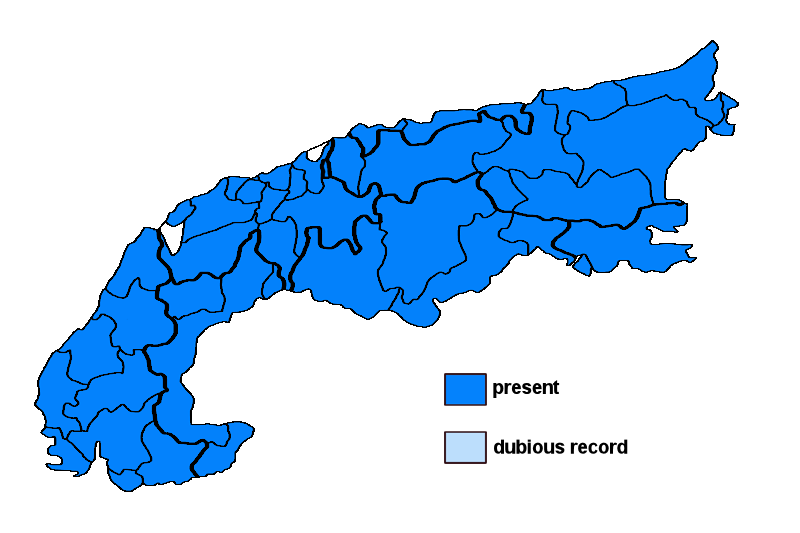Caloplaca cerina (Hedw.) Th. Fr.
Syn.: Blastenia nivea B. de Lesd., Callopisma cerinum (Hedw.) De Not., Caloplaca cerina (Hedw.) Th. Fr. var. erhartii (Schaer.) Trevis., Caloplaca gilva (Hoffm.) Zahlbr., Caloplaca gilvolutea (Nyl.) Jatta, Lecanora cerina (Hedw.) Ach., Lecanora gilvolutea Nyl., Lichen cerinus Hedw., Placodium cerinum (Hedw.) Nägeli ex Hepp, Placodium gilvum (Hoffm.) Vain., Zeora cerina (Hedw.) Flot.
Lichenised.
Substrate: bark, lignum
Altitudinal range: from the mesomediterranean belt (potential vegetation: evergreen broad-leaved forests dominated by Quercus ilex) to the alpine belt (potential vegetation: treeless Alpine grasslands and tundras, to the lower limit of perennial snow and the equilibrium line of glaciers)
Note: a holarctic, subtropical to boreal-montane lichen with optimum on smooth, mineral-rich bark (e.g. of Acer, Fraxinus, Juglans) but also on moderately eutrophicated bark of other trees, rare in polluted areas. In the complex of C. cerina s.lat. morphological differences among taxa are slight, while ecological and distributional differences are often remarkably clear. The treatment of this group is far from being complete, and it is still difficult to handle the nomenclature: at least some of the samples growing on plant debris are now segregated into C. stillicidiorum.

Austria: Vorarlberg; Tirol; Salzburg; Kärnten; Steiermark; Oberösterreich; Niederösterreich (incl. Wien); Burgenland; Germany: Oberbayern; Schwaben; Switzerland: Bern; Fribourg; Glarus; Graubünden; Luzern; St. Gallen; Schwyz; Ticino; Uri; Unterwalden; Valais; France: Alpes-de-Haute-Provence; Haute-Alpes; Alpes-Maritimes; Drôme; Isère; Savoie; Haute-Savoie; Vaucluse; Var; Italy: Friuli; Veneto; Trentino Alto Adige; Lombardia; Piemonte; Valle d'Aosta; Liguria; Slovenia: Alpine and Pre-Alpine Slovenia; Trnovsky Gozd; Liechtenstein





